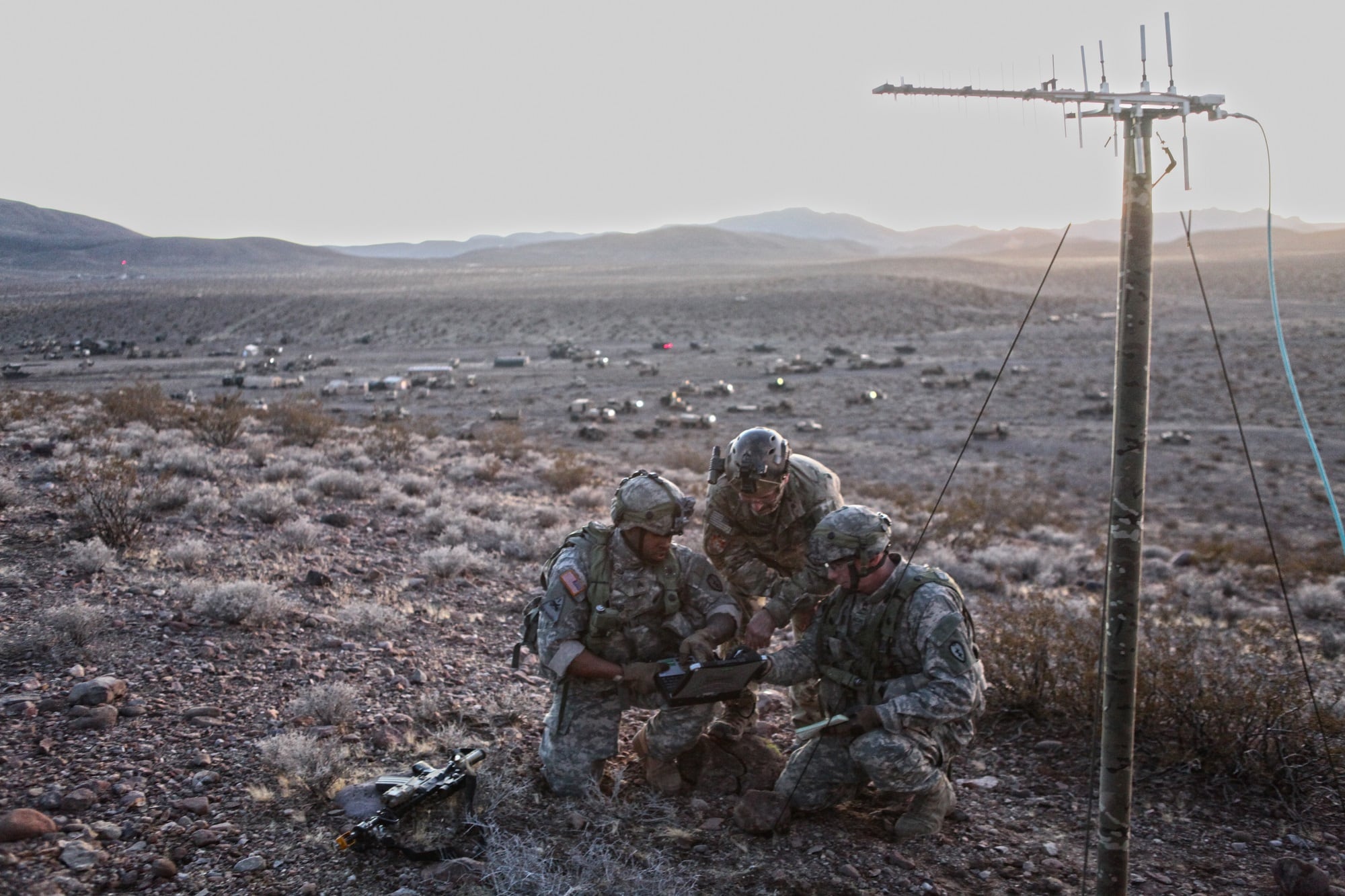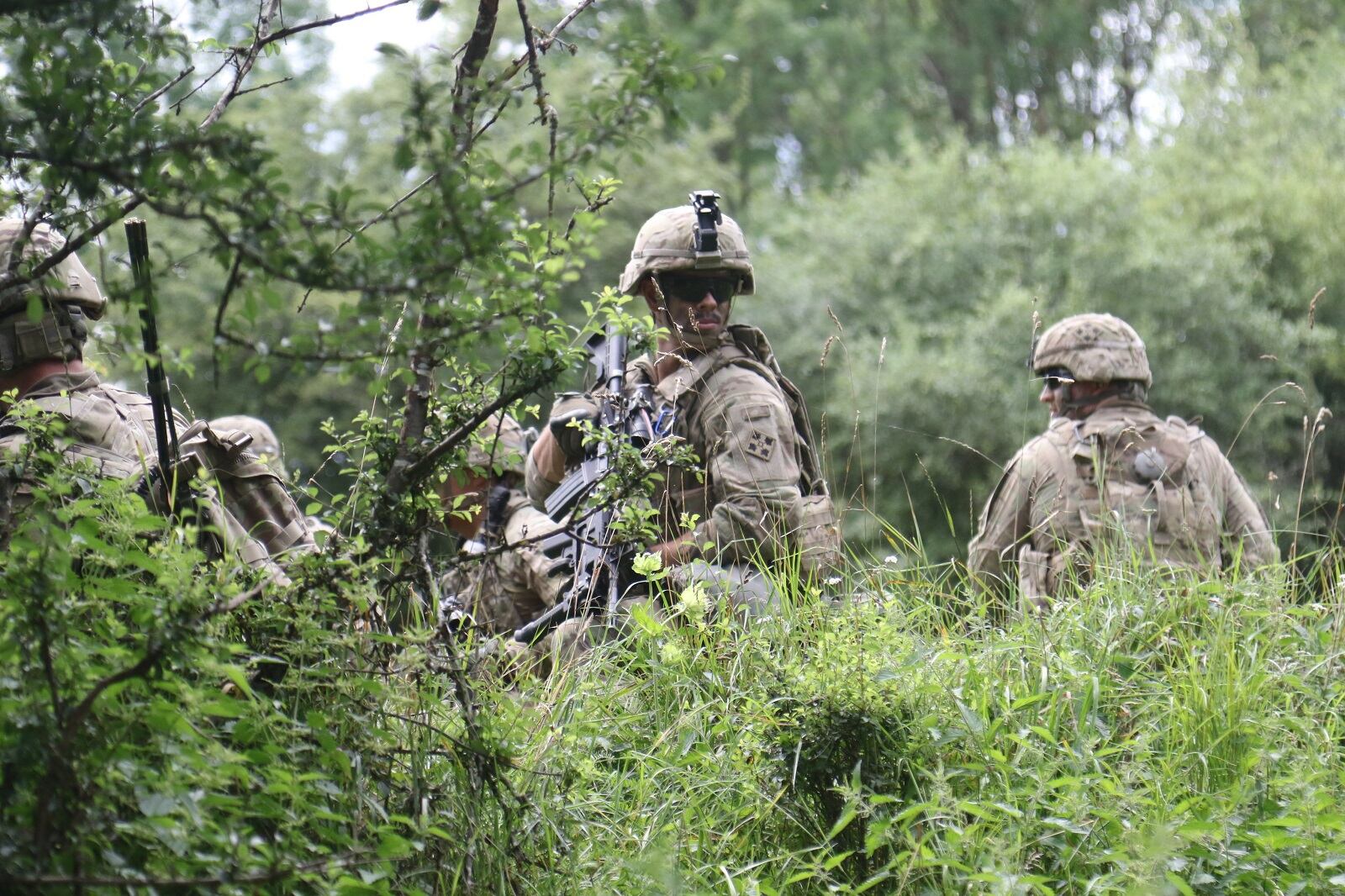The Army has been taking a series of steps through experimentation and exercise to better understand how to employ technological, non-kinetic capabilities in a future fight against a near-peer adversary.
One example of this is Cyber Blitz, an exercise put on by the Army Communications-Electronics Research, Development and Engineering Center, or CERDEC.
Cyber Blitz is a “second-generation, Army-level experiment sanctioned by the Army G-3/5/7 for establishing a field-based experiment as part of the Army’s campaign of learning to better understand how cyber and electromagnetic activities … will inform Field Manual 3.0 on maneuver and movement looking at an Army [brigade combat team] fighting in a regional peer environment in the year 2025,” Richard Wittstruck, associate director for field-based experimentation and integration at CERDEC, said during a media roundtable and walk-through of Cyber Blitz, of which C4ISRNET attended, at Joint Base McGuire–Dix–Lakehurst, New Jersey.
Cyber Blitz seeks to discover for the future force what it means to be an expeditionary brigade combat team in 2025, fighting against a regional peer that possesses advanced electronic warfare and cyber capabilities?
By providing an environment in which it’s safe to fail, the Army can practice new operational and tactical concepts; try techniques and procedures that might not be current doctrine; and test emerging technology solutions and programs of record so that assessors from Training and Doctrine Command can be better informed for writing future requirements and developing doctrine.
The 25th Infantry Division provided the blue forces, or friendly team, for Cyber Blitz. Their job, Wittstruck said, was to work with the fictional host nation, establish geospatial and cyberspace security for strategic objectives identified by the joint task force commander as well as the host nation, and provide constant support of those elements.
Teams also keenly examined how to not just enable mechanical and kinetic means, but certain maneuvers with electronic means.
Planners incorporated both a live, virtual opposing force, or OPFOR, to contest blue forces on keyboards as well as traditional forces physically maneuvering on the ranges conducting EW activities, challenging blue forces to find them.
During a tour of the range, blue forces engaged in what Wittstruck dubbed military hide-and-seek. Blue forces were given intelligence about an emitter in a village. The team had to geolocate the emitter and pass that information to its commander. The commander would then determine whether there’s a need for more intel on the tool or the operator; whether the team should launch kinetic effects against the emitter; or whether a team should be sent to engage the emitter.
These soldiers were using relatively new EW systems called VROD and VMAX, which were recently delivered to Europe. VROD surveys the field from an electromagnetic perspective, whereas VMAX provides a limited electronic attack capability.
Staff Sgt. Marco Gutierrez, who was participating in the range scenario, told C4ISRNET that these solutions are both mounted and dismounted, and result in feedback to the command post. With these tactical capabilities for smaller echelons, ground commanders can task their use on their own time to get a tactical picture of the spectrum without having to rely on other units, capabilities or organizations such as the intelligence community.
The fictional nation of Atropia
The OPFOR that the blue forces were trying to geolocate is based on a particular real-world threat. However, officials declined to elaborate, offering only that they went to the intelligence community and operators as research and to ask what they’ve seen in theater.
At a central location away from the range, the 25th Infantry Division set up a command post in the nation of Atropia in concert with the Atropian government. Though set up like a modern command post, the Army will be changing that setup along with maneuver doctrine to become more agile and mobile.
C4ISRNET was shown the operations floor of the brigade-level command post, which included a variety of personnel such as Air Force joint terminal air controllers (as a limited joint component to the exercise) and an information operations officer.
This officer monitored social media activity within the fictional nation to gain intel on what the local population might be saying and reactions to military decisions, such as the moving of large tank formations within a town. He would also notify the commander of internet trolls, who might be put under investigation if the commander considers them a threat.
There is also a cyber and electromagnetic activities, or CEMA, cell within the command post, which includes personnel to conduct network operations, offensive and defense cyber operations, and electronic warfare.
The Army is working to integrate these CEMA cells into every operational unit.
“Some of the constraints right now are if we were to go and fight a near-peer adversary and run 24-hour operations, do we have the equipment, manning and training to do that; and I would say this is identified that we could do that in short bursts of time, but not necessarily sustain it over a longer period,” said Chief Warrant Officer 2 Nick Esser, an electronic warfare technician with the 25th Infantry Division.
The Army is updating its primary maneuver and movement doctrine for how it fights land operations. Commanders will need to understand how to employ these capabilities and how they fit into their scheme of maneuver.
RELATED

For example, an armored brigade combat team might say it can organically handle a lot of EW and cyber forces, Wittstruck said, while an infantry commander might decline CEMA capabilities because heavy fire is provided by higher echelons, negating the need for electronic attack across large regions.
But commanders will not only have to control physical objectives, but objectives in cyberspace. For example, Wittstruck said, forces might be able to secure a physical facility, but it an enemy force can remotely access the facility’s controls, “I’ve won the day but I’ve kind of lost the cause,” Wittstruck said.
A small team from U.S. Army Europe observed the exercise to take lessons back to theater in light of Russia’s advanced capabilities.
“We want to take some of the lessons learned from this experiment and start squeezing that in our exercise in Europe because this is a problem we face today,” said Col. Dennis Wille, U.S. Army Europe G-3 for strategic programs. “We cannot wait for the acquisition process … to go for a number of years. We’re trying to translate and transfer the information we’re learning here today into our environment.”
RELATED

Mark Pomerleau is a reporter for C4ISRNET, covering information warfare and cyberspace.








